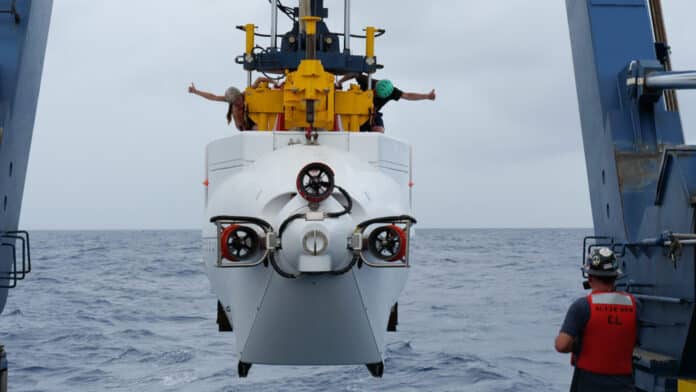Alvin, the human-occupied research submarine, made history when it successfully reached a depth of 6,453 meters (nearly 4 miles) in the Puerto Rico Trench. This is the deepest dive ever in the 58-year history of the storied submersible, according to the Woods Hole Oceanographic Institution (WHOI).
The dive was a key step in the process of achieving certification from the U.S. Navy to resume operations after an 18-month overhaul and upgrade that extended the submersible’s maximum dive rating from 4,500 meters (14,800 feet) to its new limit of 6,500 meters (21,325 feet). Naval Sea Systems Command (NAVSEA) requirements stipulate the certification dive be between 6,200 and 6,500 meters.
The three-person crew was oboard Alvin for this history-making dive. The addede range puts roughly 99% of the seafloor within reach of the world’s longest-operating human-occupied submersible program in the world.
The Alvin is one of the most recognized and most widely used deep submergence vessels in the world and the only one in the U.S. capable of carrying humans into extreme ocean depths and conducting a complex scientific study of the deep ocean and seafloor. The latest historic dive means the submersible has completed 5,086 successful dives, more than all other submersible programs worldwide combined, the team says. On average, it conducts about 100 dives per year on missions to study the processes that create and shape Earth’s crust, the chemical conditions that support life in extreme environments, and the vast diversity of life in the deep sea.
For the past three weeks, Alvin underwent a series of tests as part of its sea trials, overseen by the NAVSEA. These included tests of its mechanical and electrical systems and its ability to operate safely at depth. The process concluded with certification to resume operation and to dive to its new maximum depth.
“The Alvin team at WHOI again demonstrated why they are world leaders in deep submergence technology with this momentous achievement,” said Brian Midson, Program Director for Submersible Support at the National Science Foundation (NSF) which largely funded the upgrade. “It is exciting that Alvin will now extend its support of researchers making discoveries in the least visited places on the planet for generations to come.”
